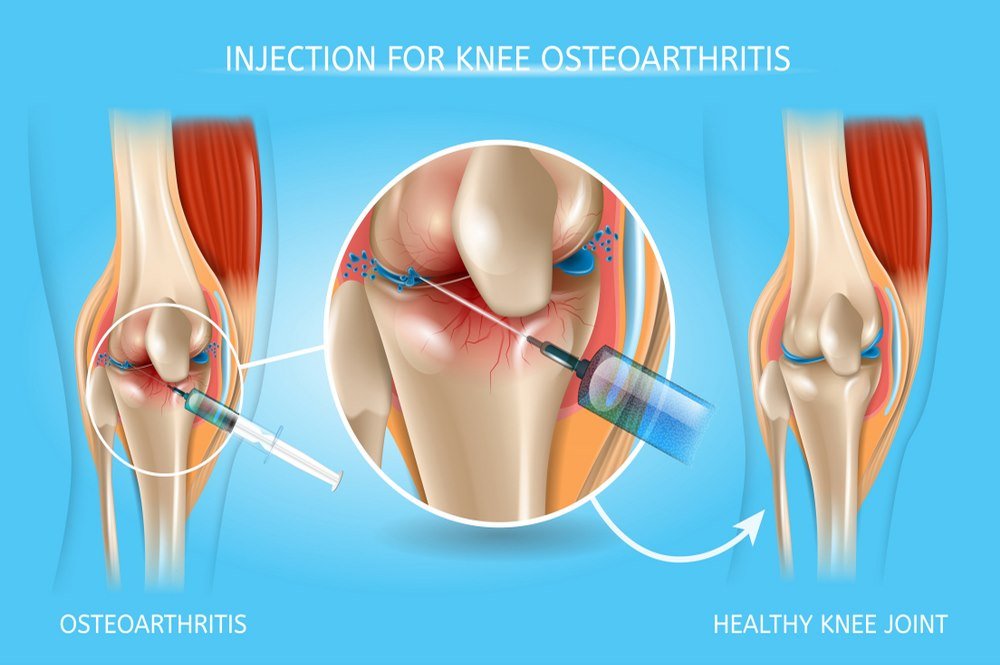Injections For Knee Osteoarthritis

When first-line treatments such as physical therapy and losing weight do not adequately affect knee arthritis pain, a doctor may recommend therapeutic injections. [3]
Several types of therapeutic injections are available to help relieve knee osteoarthritis pain.
- Hyaluronic acid injections (viscosupplementation) – These provide lubrication to the knee joint and thus reduce pain.
- Platelet rich therapy (PRP) injections – PRP injections use elements of a person’s own blood to alleviate pain, improve mobility, and theoretically encourage healing and tissue repair.
- Stem cell injections – In this type of injections cells derived from fat (adipose) or bone marrow are used to harvest growth factors, while some stem cells are directly derived from the patient, injecting them back into the patient that same day. As with PRP, the main goal of these injections is to encourage new tissue growth.
- Prolotherapy – It is a therapy in which several injections of any irritant (typically dextrose based “sugar water”) are inserted into the damaged tissue. Physicians believe the irritant stimulates inflammation and resumes the body’s natural healing process.
- Cortisone or steroid injections – These are the mostly used joint injection but have less applicability as they may lead to loss of cartilage in an arthritic knee. Some physicians who treat knee arthritis will recommend a steroid injection only once, while most of the arthritis experts have completely stopped the use of steroid injections for knee arthritis. The goal of these steroid injections is to reduce inflammation and thereby relieve knee pain, stiffness, and swelling.
- PRP injections, Prolotherapy, and stem cell injections – These are regenerative medical treatments that aim to reduce pain, improve mobility, and provide an environment to enhance tissue repair. They are declared experimental by insurance companies and are usually not an insurance-covered treatment.
These several Injections can be a great source of relief for pain and immobility for some patients, but they do not always work. They may show dramatic effects for some, and less so for others. The time period of action varies by individual.
